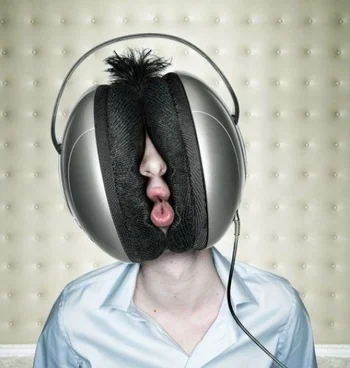Few inventions have done more than headphones to preserve peaceful relations between teenagers and adults. Parents no longer have to yell “Turn that noise down!” a hundred times a day. On the other hand, their kids rarely come when called.
The rules for polite use of personal, portable listening devices are few but essential:
- Remove your earbuds or headphones when speaking to someone. Show that you’re giving your full attention to the conversation. This also eliminates the need to shout so you can hear yourself.
- If someone wearing headphones addresses you, mouth your response silently. He’ll think the problem is on his end and will remove the headphones, which is what he should have done in the first place.
- In public places, keep the volume low enough so only you can hear it. If you’re nuking your brain, it probably means that people at the other end of the bus or subway or gym or Starbucks can also hear your music. Only instead of the pleasant sounds you’re enjoying, they’re hearing a scratchy metallic noise comparable to fingernails scraping across a chalkboard.
- If you listen to music when walking downtown, riding a bike, jogging, skating, or strolling along train tracks, keep the volume very, very low. Make sure you can hear approaching traffic or someone shouting a warning. If you get run over by a truck or hit by a train, you’ll make a mess that others will have to clean up, and that’s bad manners.
- Don’t wear your headphones while driving a car. Not only is this dangerous, in some states it’s illegal.
HEALTH TIP: There's another good reason for keeping the volume low on your listening device: Research shows that listening to loud music on portable devices can cause noise-induced hearing loss in teens. That's right, as portable music gadgets increased in popularity, so did teenage hearing loss. ln fact, it's estimated that 1 in 5 adolescents now suffers some degree of impaired hearing. This type of hearing loss occurs painlessly, gradually, and unknowingly, but teens can minimize the chance this will happen to them:
- Lower the volume. I said, LOWER THE VOLUME! (Under 85 decibels.) Many teens listen at full volume (100 or more decibels) on their devices. This is equivalent to having a chainsaw or motorcycle engine blasting into your ears. If the volume is set so that only you can hear it, chances are it's a safe level that is unlikely to damage your hearing.
- Wear headphones instead of earbuds. Headphones are better at reducing background noise so you can hear the music at a lower volume. And they don't laser quite as much sound energy into your ears.
- Take a 15-minute silence break every hour. Nonstop listening increases the risk of permanent damage to the sensory cells of the inner ear.
Aural laurels will flow to teens who follow these plauditory auditory guidelines.
Adapted from How Rude! by Alex J. Packer, copyright © 2014. Used with permission of Free Spirit Publishing Inc., Minneapolis, MN; 800-735-7323; www.freespirit.com. All rights reserved.

